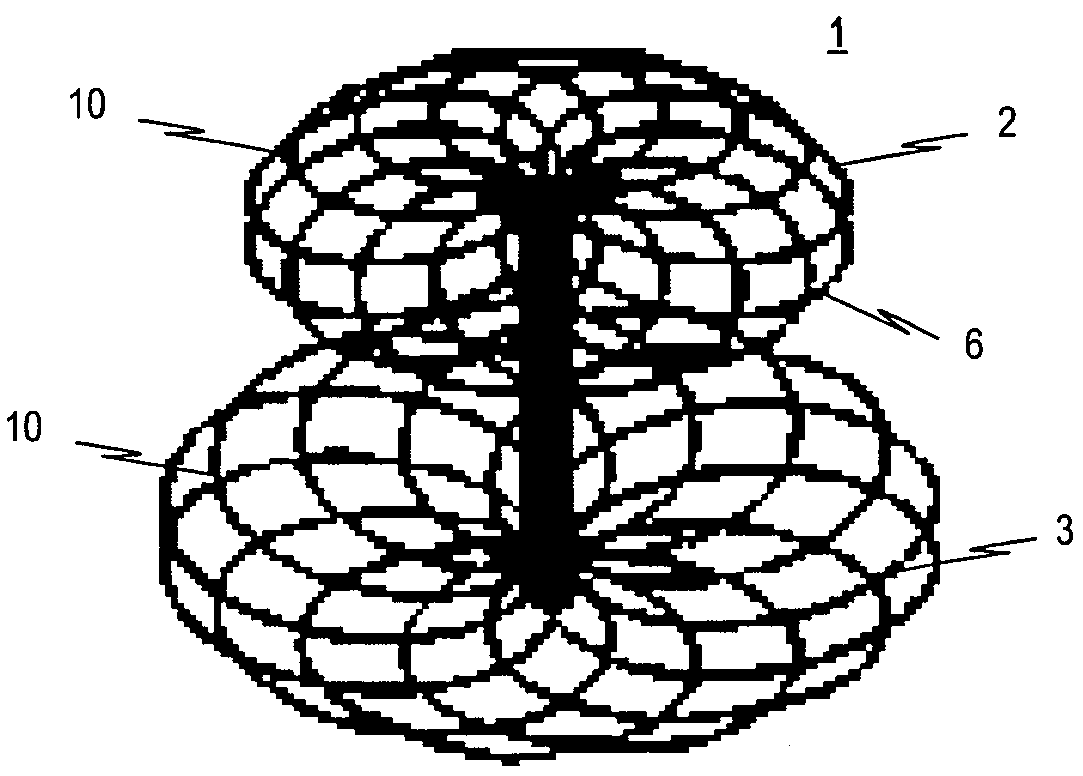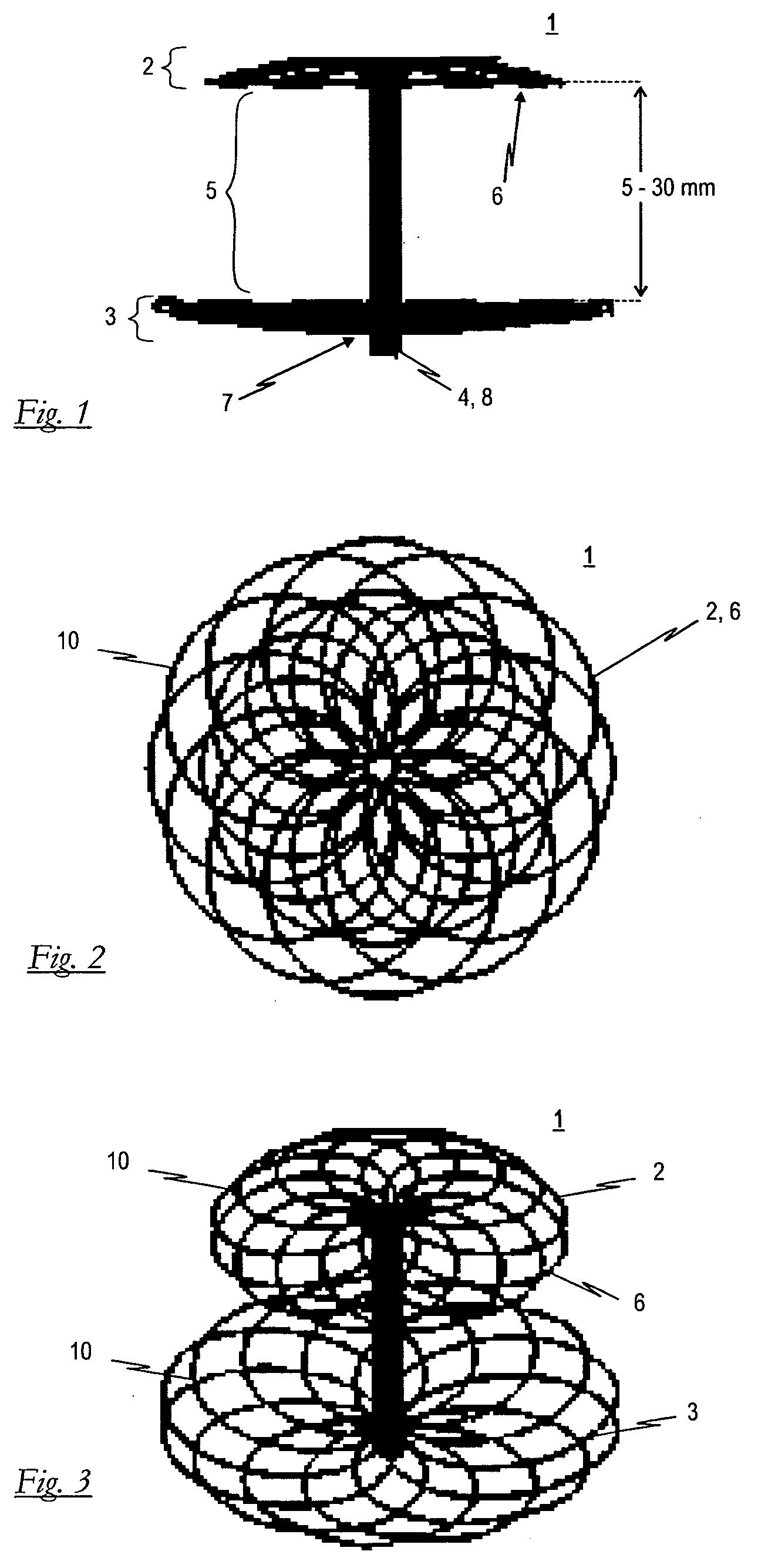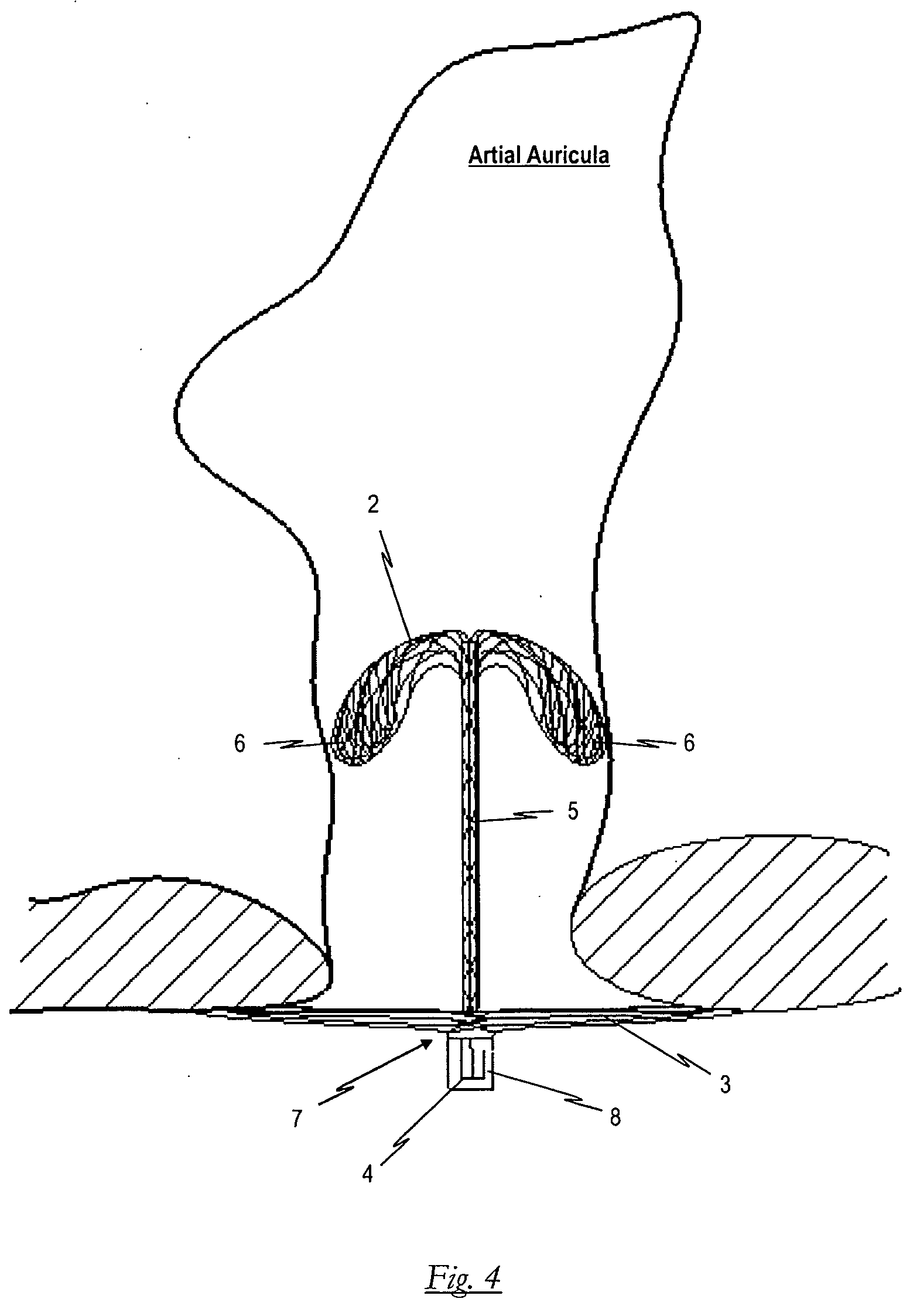Occlusion device for occluding an atrial auricula and method for producing same
a technology of occlusion device and atrial auricula, which is applied in the field of self-expanding occlusion device, can solve the problems of affecting the occlusion device is relatively complicated, and the implantation procedure is difficult and complex, so as to improve the positioning accuracy of the device, improve the maneuverability of the occlusion device, and reduce the internal diameter
- Summary
- Abstract
- Description
- Claims
- Application Information
AI Technical Summary
Benefits of technology
Problems solved by technology
Method used
Image
Examples
Embodiment Construction
[0052]FIG. 1 shows a side view of a preferred embodiment of the inventive self-expanding occlusion device. FIGS. 2 and 3 show a top plan view of the proximal end and a stereoscopic representation of the embodiment pursuant to FIG. 1.
[0053] The inventive occlusion device 1 of the embodiment as depicted includes a braiding 10 of thin wires or threads given a suitable form by means of a molding and heat treatment procedure. The shape to occlusion device 1 depicted in FIGS. 1-3 is that of a barbell-like profile consisting of a front distal retention area 3, a center section 5 and a rear proximal retention area 2. The ends of the wires or threads of braiding 10 converge into a holder 4 in distal retention area 3. In contrast, proximal retention area 2 exhibits a form tapering toward the proximal end.
[0054] Proximal retention area 2 is moreover depicted to have a flanged area 6, which is formed by the at least partly folding over of proximal retention area 2 to the distal end.
[0055] Br...
PUM
 Login to View More
Login to View More Abstract
Description
Claims
Application Information
 Login to View More
Login to View More - R&D
- Intellectual Property
- Life Sciences
- Materials
- Tech Scout
- Unparalleled Data Quality
- Higher Quality Content
- 60% Fewer Hallucinations
Browse by: Latest US Patents, China's latest patents, Technical Efficacy Thesaurus, Application Domain, Technology Topic, Popular Technical Reports.
© 2025 PatSnap. All rights reserved.Legal|Privacy policy|Modern Slavery Act Transparency Statement|Sitemap|About US| Contact US: help@patsnap.com



